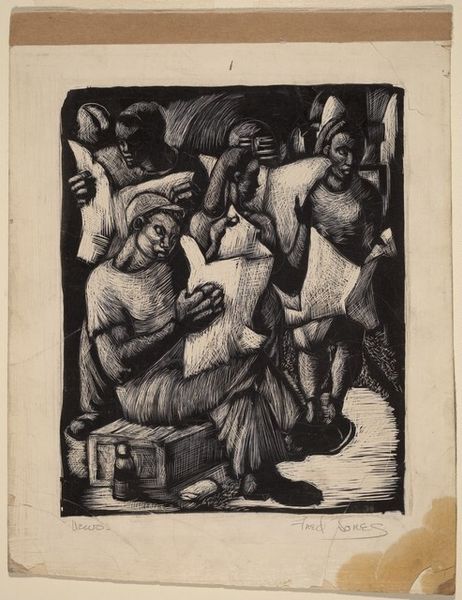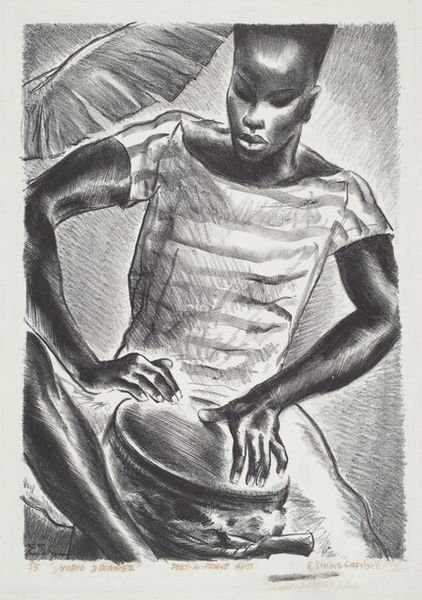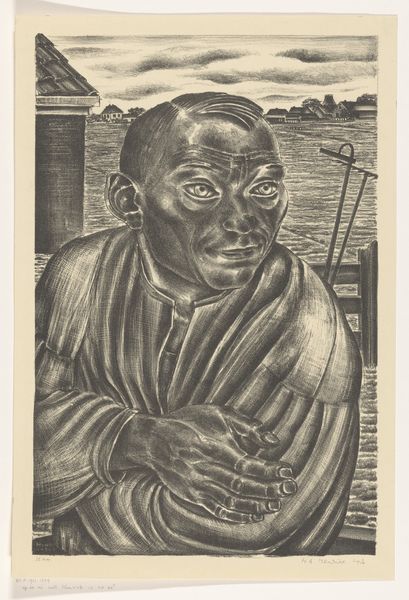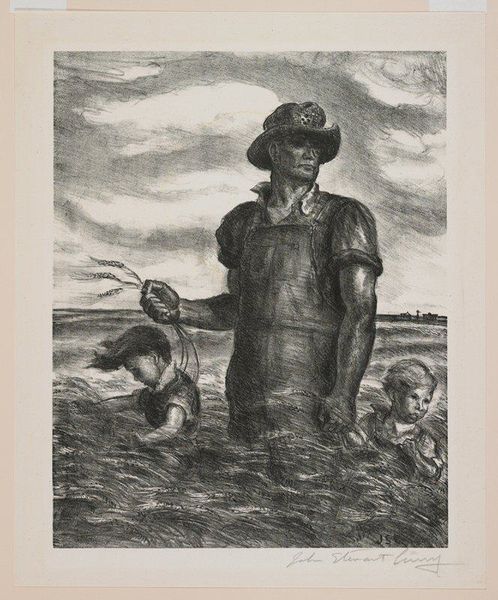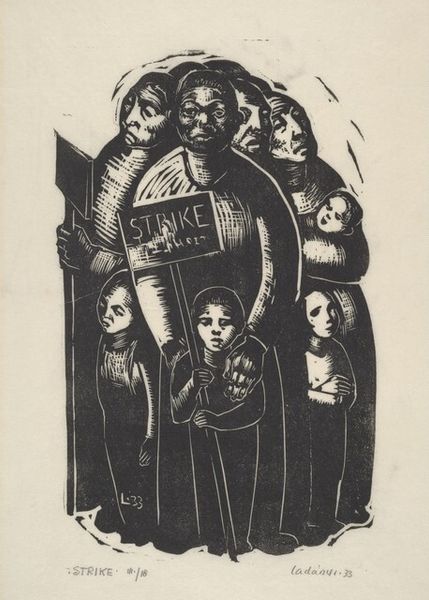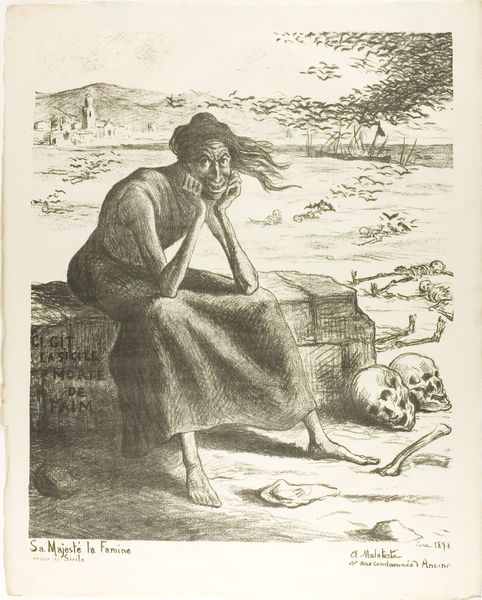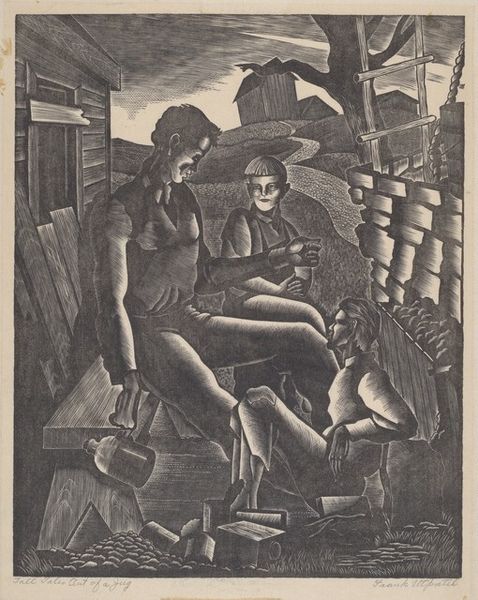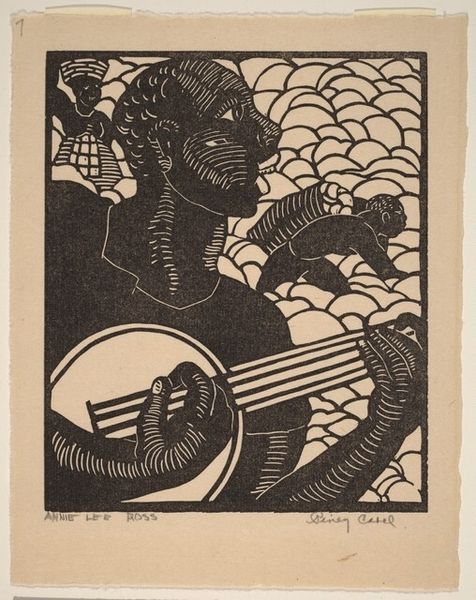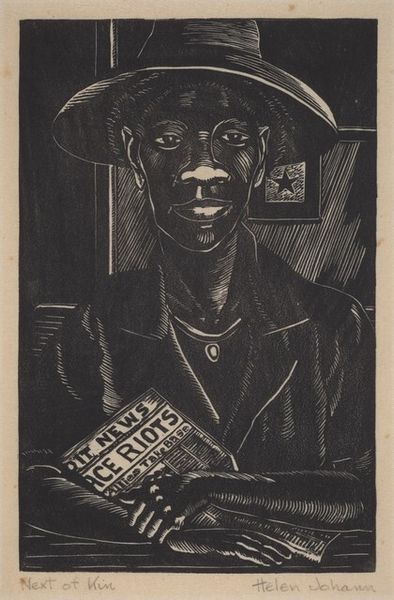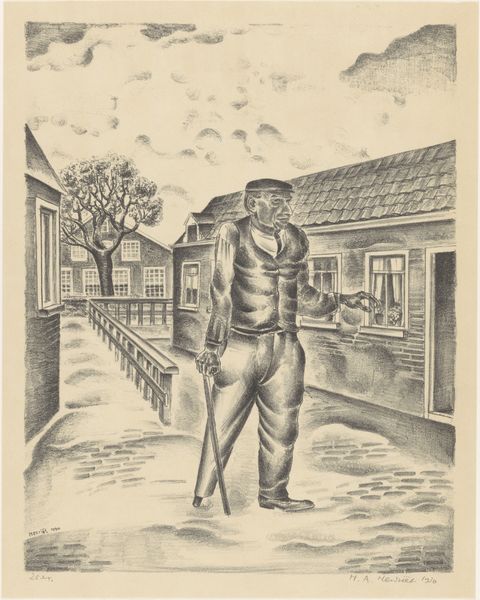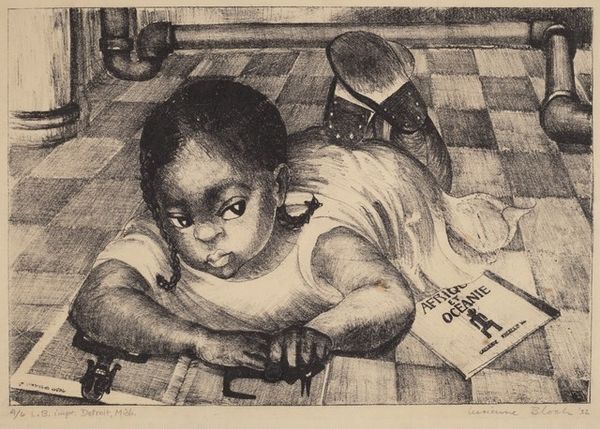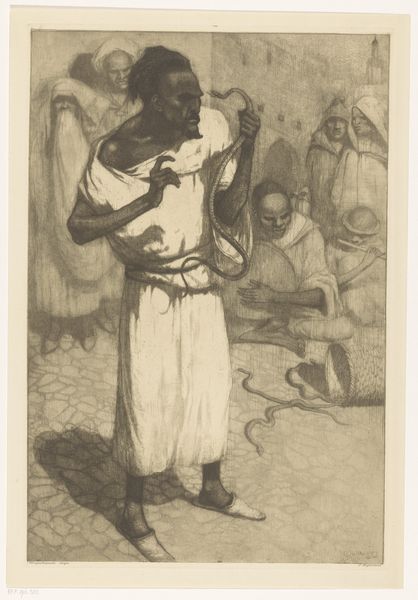
drawing, print, charcoal
#
portrait
#
pencil drawn
#
drawing
# print
#
landscape
#
harlem-renaissance
#
charcoal drawing
#
social-realism
#
pencil drawing
#
portrait drawing
#
charcoal
Dimensions: Image:470 x 350mm Sheet:572 x 434mm
Copyright: National Gallery of Art: CC0 1.0
Curator: Editor: So here we have John Wilson's "Breadwinner," a charcoal and print piece created in 1943. It has this striking visual weight, especially in the foreground. The figure dominates the space, but I'm curious about the broader context. What do you see in this work? Curator: What I notice immediately is the materiality – charcoal on paper, a readily available medium, a choice laden with its own history of accessibility and widespread use, particularly within socially conscious art movements. Notice how Wilson utilizes the stark contrasts and rough textures achievable with charcoal to depict the working class. What does the inclusion of the printmaking process suggest about the intended audience and distribution of the work? Editor: That's fascinating. A print could mean wider distribution, making the art more accessible to the community it depicts. Does that say something about the labor of art-making, and who it serves? Curator: Precisely! It challenges traditional notions of art being solely for the elite. This was made during wartime, and in terms of cultural context, it coincides with heightened awareness around labor and social inequities. The artist chose an inexpensive way to reach out to common people to discuss complex issues that involve the working class, such as the fight for sustenance in the modern capitalist urban setting. Editor: So it's less about the aesthetic object itself, and more about its journey and impact. I never considered the social and economical forces inherent in it. The pigeons in the foreground can then be considered scavengers surviving off of industrial waste! Curator: Yes. Thinking materially brings to light the complex interconnected web between the hand of the artist, labor and distribution. By choosing printmaking to depict an image of a person struggling to make ends meet, he underscores the means of its making as well as who gets to access the meaning behind it. Editor: That perspective completely reframes how I understand art. I will keep thinking about it moving forward.
Comments
No comments
Be the first to comment and join the conversation on the ultimate creative platform.
